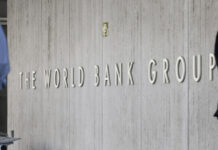
ANALYSTS warmed to Glencore’s bid for a 49% stake in Hunter Valley Operations (HVO), a coal mine in Australia’s New South Wales, and also suggested the group’s cash generation would give it “optionality” in merger and acquisition activity.
Glencore announced last week that it would pay $1.139bn for a joint venture share in HVO as well as participate in royalty payments to Rio Tinto which sold the mine as part of its disposal of Coal & Allied (C&A) to Yancoal, the Chinese group against which Glencore had first competed for C&A.
In circling back and buying a stake in but one of C&A’s assets – HVO – Glencore had probably extracted the best of both worlds, according to analysts. “We think the joint venture for the HVO asset is perhaps even more favourable [than buying C&A outright] as Glencore will now jointly own the “crown jewel” … the prize it was likely ultimately always after in the C&A bid,” said Bernstein analyst Paul Gait, in a note last week.
Glencore had offered $2.675bn for C&A which also consists of the Mt Thornley and Warkworth mines, but it’s HVO that presents the best synergies. Importantly, Glencore also has the right to market 13.6 million tonnes of saleable thermal coal produced by HVO annually, of which 70% is export quality.
“The HVO JV may be second prize for Glencore, but for shareholders the deal offers the best of both words: smaller capital outlay while retaining the potential to extract meaningful synergies,” said Macquarie in a report. “Despite Glencore’s weak second quarter performance, we continue to rate the stock as our top pick amongst the majors given its compelling valuation and attractive commodity basket,” it said.
Glencore will pay for the joint venture from existing cash resources of which there was no shortage. According to a report by Goldman Sachs, there’s upside risk to the $1bn dividend payment Glencore said it would pay this financial year, starting with an expected $500m at the half-year which is due to be reported on August 10.
“While we expect $500m to be paid out for the first half, we see significant upside risk in 2H,” said Goldman Sachs. “We forecast the company to declare an extra dividend of 8.4 cents on top of the fixed 7c which should take the total dividend per share for the 2017 financial year to 15c, ahead of consensus,” it said.
“Glencore is generating significant free cash flow which, on our estimates, sees the company’s balance sheet improve. Even on our conservative commodity price forecasts, we see the company turning net cash by 2019,” it said.
“The balance sheet improvement is even greater at spot which would see the company turning net cash by 2018. The strong balance sheet allows the company to engage in M&A which, in our view, should be taken positively by the market,” it said.
Said US investment firm, Jefferies, in a note in June: “We believe Glencore is positioning itself for large mining merger and acquisition once again, and Rio [Tinto] would still be a desireable target,” – a reference to the events in 2014 when it emerged Glencore had explored the takeover of the Anglo-Australian firm.
In lieu of accretive deal-making, Glencore also has the option of gradually throttling up production it idled during the commodity price correction.
According to Goldman Sachs, the most notable volume increases Glencore can bring to the market are shuttered zinc capacity, some 450,000 tonnes of copper production from Katanga and Mopani in the Democratic Republic of Congo and Zambia, and a further 30,000 tonnes of cobalt from these assets.
“Now that prices have rallied significantly, we believe the company will look to ramp up production, albeit in a phased manner so as to not push prices lower,” said Goldman Sachs.











